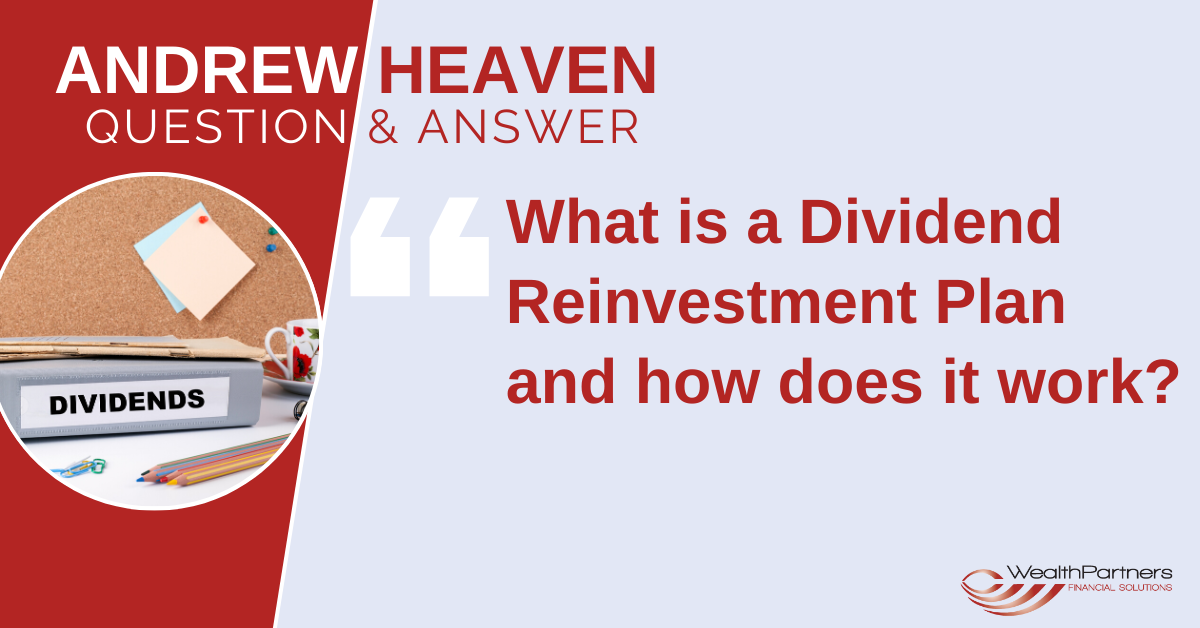Q: What is a Dividend Reinvestment Plan (DRP) and how does it work?
A: A DRP allows you to increase your investment in a company or an Exchange Traded Funds (ETF) over time by automatically reinvesting dividends in new shares/units rather than receiving the dividends in cash.
Companies that offer DRP may issue these new shares/units at a discount to their listed share price at the time.
DRP shares issued are acquired without any brokerage or other transaction costs.
New shares will be listed on the stock exchange and perform on the same basis as other shares in the company.
The amount you receive in a distribution is applied to acquiring additional shares or units in whole amounts. Any distribution left over will be retained on your behalf and added to subsequent distributions to purchase new shares or units on the next distribution period.
If you do not rely on dividends for cash flow purposes, DRP can be a convenient way of increasing your investment. DRP enables you to enjoy the benefits of compounding as you will be increasing the number of shares you own which in time increases the distributions you receive.
Even though dividends are paid in the form of new shares or units, the dividends are still assessed as income in the financial year that the DRP shares are issued.
DRP creates complexity for Capital Gains tax purposes. Shares are issued at the cost base applicable at the time they are issued which makes long term monitoring and calculation of capital gains complex but important.
Listed companies and ETF providers are not obliged to offer DRP and can retract a DRP at any time. So there is no guarantee that you will be able to keep reinvesting your dividends in new shares.
When you buy shares in a company that offers a DRP, you can opt in or out of the arrangement online via the share registry website at any time.
Whether you should take your distribution in the form of cash or elect to participate in a DRP depends on your individual circumstances. You need to take into consideration your cash flow needs, your tax position and your investment objectives.


